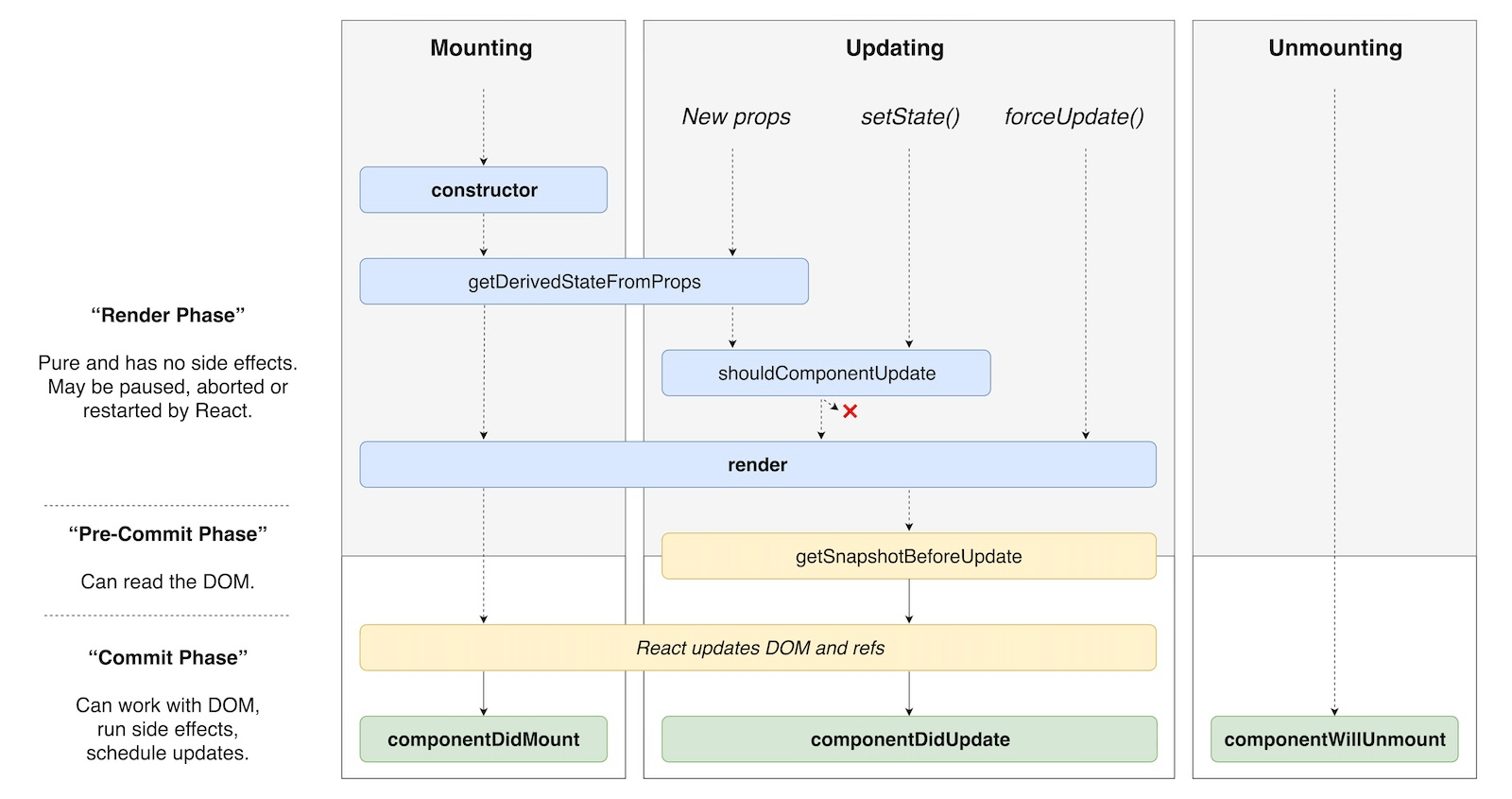组件
组件为渲染结果添加状态,更是 Preact 的基石和构建复杂界面的基础。
我们将在此教程中展示 Preact 中的两种组件。
函数组件
函数组件是第一个参数为 props 的普通函数,其名称必须以大写字母开头才能在 JSX 中使用。
function MyComponent(props) {
return <div>我的名字叫{props.name}。</div>;
}
// 用法
const App = <MyComponent name="张三" />;
// 渲染结果:<div>我的名字叫张三。</div>
render(App, document.body);请注意,在先前的版本中我们将其称之为
“无状态组件”,但有了钩子组件后就不是了。
类组件
类组件可以拥有状态及生命周期方法,后者是当组件添加到 DOM 或销毁时调用的特殊方法。
下面是一个显示当前时间的简单类组件 <Clock>:
class Clock extends Component {
constructor() {
super();
this.state = { time: Date.now() };
}
// 生命周期:在组件创建时调用
componentDidMount() {
// 每秒钟更新一次时间
this.timer = setInterval(() => {
this.setState({ time: Date.now() });
}, 1000);
}
// 生命周期:在组件销毁时调用
componentWillUnmount() {
// 在无法渲染时停止时钟
clearInterval(this.timer);
}
render() {
let time = new Date(this.state.time).toLocaleTimeString();
return <span>{time}</span>;
}
}
生命周期方法
为了让时钟能每秒钟更新一次事件,我们需要知道 <Clock> 什么时候会被挂载到 DOM 上。如果您用过 HTML5 自定义元素的话,您就会发现这和 attachedCallback 与 detachedCallback 生命周期方法很像。Preact 会自动为组件调用下列列表中存在的生命周期方法 :
| 生命周期方法 | 被调用时间 |
|---|---|
componentWillMount() |
(已弃用) 组件将被挂载到 DOM 前调用 |
componentDidMount() |
组件被挂载到 DOM 后调用 |
componentWillUnmount() |
组件将从 DOM 移除前调用 |
componentWillReceiveProps(nextProps, nextState) |
(已弃用) 在传递进新属性前调用 |
getDerivedStateFromProps(nextProps) |
在 shouldComponentUpdate 前调用,请小心使用! |
shouldComponentUpdate(nextProps, nextState) |
在 render() 前调用,返回 false 来跳过渲染 |
componentWillUpdate(nextProps, nextState) |
(已弃用) 在 render() 前调用 |
getSnapshotBeforeUpdate(prevProps, prevState) |
在 render() 前调用,返回值将传递进 componentDidUpdate |
componentDidUpdate(prevProps, prevState, snapshot) |
在 render() 后调用 |
这是它们之间关系的可视概览(源自 Dan Abramov 发布的推文):

错误边界
错误边界是至少实现了 componentDidCatch() 和 getDerivedStateFromError() 两者之一的组件。这些特殊方法允许捕获渲染过程中发生的任何错误,通常用于提供更好的错误信息或默认内容并保存日志信息。需要注意的是,错误边界不能捕获所有的错误,事件处理程序和异步代码(如 fetch() 调用)需要单独处理。
当捕获到错误时,我们可以使用这些方法对错误做出响应并展示错误信息或默认内容。
class ErrorBoundary extends Component {
constructor() {
super();
this.state = { errored: false };
}
static getDerivedStateFromError(error) {
return { errored: true };
}
componentDidCatch(error, errorInfo) {
errorReportingService(error, errorInfo);
}
render(props, state) {
if (state.errored) {
return <p>Something went badly wrong</p>;
}
return props.children;
}
}
片段 (Fragment)
Fragment 允许一次返回多个元素,解决了 JSX 每个“代码块”只能有一个根元素的限制。你将会经常在列表、表格、flexbox 等中间元素会影响样式的情况遇到它。
import { Fragment, render } from 'preact';
function TodoItems() {
return (
<Fragment>
<li>A</li>
<li>B</li>
<li>C</li>
</Fragment>
)
}
const App = (
<ul>
<TodoItems />
<li>D</li>
</ul>
);
render(App, container);
// 渲染结果:
// <ul>
// <li>A</li>
// <li>B</li>
// <li>C</li>
// <li>D</li>
// </ul>请注意,大部分现代转译器支持 Fragments 的简写语法,这种语法更为常见:
// 如下代码
const Foo = <Fragment>foo</Fragment>;
// ...与下列代码等同:
const Bar = <>foo</>;您也可以从组件中返回数组:
function Columns() {
return [
<td>Hello</td>,
<td>World</td>
];
}若要在循环中创建 Fragments,别忘了为其添加键:
function Glossary(props) {
return (
<dl>
{props.items.map(item => (
// 没有键值的话,Preact 需要猜测哪些元素在重渲染时存在变化。
<Fragment key={item.id}>
<dt>{item.term}</dt>
<dd>{item.description}</dd>
</Fragment>
))}
</dl>
);
}